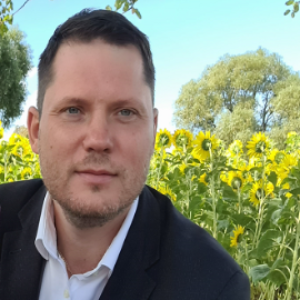Title : Modeling excited states and raman spectra for carotenoid and their complexes using high performance parallel codes
Abstract:
Natural carotenoids display a large structural diversity and more than 1100 of such molecules have been identified while there are several chlorophyll type molecules only. The simplest model for carotenoids is polyene structure. This model predicts three low-energy excited states according to C2h symmetry. Only the one can be calculated using time-dependent density functional theory which is labelled as second excited state transition. The higher-level ab-initio methods are required such as SAC-CI, EOM-CCSD, CASSCF or others in order to model the other two states. The other challenging factors are computations itself as the higher-level ab-initio methods have various limitations for scaling in high performance parallel codes. The main problem is the double excitation type electron correlations which play major part in these states. On the other hand, the allene and alkyne type carotenoids have clear internal charge transfer states in different solvents which modelling is challenging also. The other charge transfer states appear when the carotenoid and chlorophylls molecules are in complexes. The latter states can be predicted by typical time-dependent density functional theories. However, there should be additional states according to experimental data. According polyene chain models the second excited state and Raman v1 spectra should have linear correlations. It is not true for all type carotenoids; even effective conjugation length description cannot be applied in all cases. Density functional theory provide quite detailed Raman and second excites state spectra description about allene and alkyne carotenoids. Also, according our study the carotenoids with cyclodextrin provide information importance of central double bond carbon-carbon vibrations and Raman v1 value. Large scale computations provide more detailed information which allow better understand carotenoid properties which can be expected in real life biological systems.
Audience take-away:
- Learn Time-Dependent Density functional theory, Density functional theory and other ab-initio limitations for modelling Carotenoids and conjugated structures.
- Several examples will be given for modeling beta-carotene, fucoxanthin and peridinin carotenoids.
- It will stimulate the audience to discuss about carotenoids properties.
- It will stimulate the audience to think about computational methodology and limitations.



